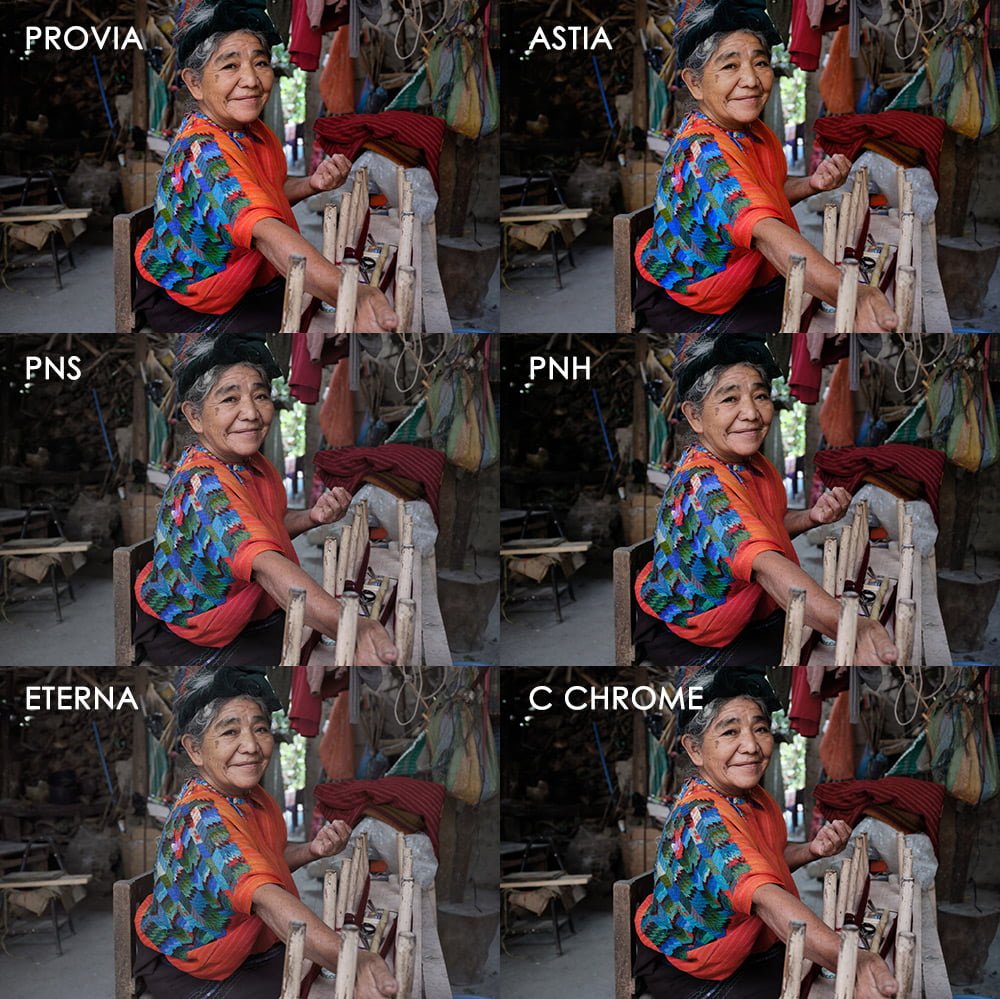Disclosure: This post may contain affiliate links. I earn a small commission of product sales to keep this website going.
As if I didn’t have anything better to do with my time, I made my way down the Internet rabbit hole and found some things that started to boil my blood. Why do we do that to ourselves?
One such post – and forgive me for not remembering exactly where it was – wanted to know if Fujifilm X film simulations were close to the real Fuji film stocks. Like, how accurate is the Velvia simulation to the real thing? Or ACROS?
So this got me thinking about how I would answer this question of how accurate Fujifilm film simulations are.
My answer? Who cares! Stop researching this nonsense and get out there and photograph! My god, the world needs some art right now, stop wasting your time with this stuff and go create.
Don’t lose sight of the big picture, no pun intended!
What Are Film Simulations All About?
Fujifilm’s film simulations are all about styling your photos. To get different looks than all those other bland camera manufacturers, looks that help you create a mood or tell a story.
They’re not replacements for film. If you want film, shoot film.
But why do photographers choose the film they choose? For different subject matter, lighting, and looks. Film simulations give us the same workflow options but in a digital format.

They’re Not All That Far Off…
The same guys who developed the actual chemical film worked on developing the digital equivalents you have in your Fujifilm X camera. That should put you at ease enough already.
Velvia 50 was my favorite film photographing the Arizona desert when I was in college over 20 years ago. I use the Velvia simulation to photograph the same landscapes now on my X cameras. Holding the two side-by-side, at first glance, it looks like the simulation is pretty close to the real deal. The analysis should end there.
Your viewers won’t be looking at your digital photos and then making notes about how the sky has a touch less magenta and the oranges lost an almost imperceptible pop than what the same scene would look like on film. There is no base reference, so what does it matter?
An Objective Analysis is Nearly Impossible Anyways
Not all film is developed equally, and not all RAW files are treated equally.
Push/pull processing, chemicals used & temperatures, and other darkroom variables and techniques are going to alter how the final print looks. The same negative developed by two different people will give you two different prints.
Same with how the camera handles the RAW file…in Fujifilm X cameras we can adjust our highlight & shadow toning, color treatment, and more.
So from a technical standpoint, there’s really no way to answer this.
Don’t Let This Influence Your Creative Decisions
I suppose the only legitimate curiosity about this is if you’ve been using Fuji films for years. You’ve switched over to digital cameras and you want to know how to change your exposure choices based on the film simulation being used, if at all.
After experimenting with Velvia 50 years ago, I found that I preferred an exposure favoring the bright areas. This gave me rich colors in the skies and deep shadows. I’ve found the same is true for the digital equivalent.
Without this prior experience, why does it matter? Just select the film simulation and expose for what looks right to you.
We’re not using film. We’re using a digital stylized preset that will alter hues, saturation, and contrast, based on how you expose, using computers.
The only way you’ll master your camera as a creative tool is by using it more and spending less time worrying about how “accurate” film simulations are.
Rant over. Thanks for sticking with me 🙂

ARIS
Sunday 30th of July 2023
Lady or Gentelman please advise for film sim for shooting hot air balloons at night and at sunrise
Thanks in advance Aris
Gerhard Botha
Saturday 22nd of October 2022
Yes I dont get the hype about these film simulations. You can take any decent Raw file and apply a fixed recipe in post processing and you can achieve a given look. So if that floats your boat, make some recipes or buy a Fro pack or whatever- its just a few clicks away on any camera. Shoot RAW and your options are plenty
John Peltier
Saturday 22nd of October 2022
Or I could just do it all in the camera and not have to go into a RAW converter at all. I was on a photo outing all day yesterday — personal photos just for me, not commissioned work. I took a few minutes in the beginning to choose a film simulation and set my image quality settings. I was very thoughtful about my exposure, white balance, composition, and moment the entire day. I got home, exhausted, with a bunch of photos I was very happy with. I transferred them over to my storage, added some bulk keywords, and I was done with them. All that time I would have been lost in the rabbit hole of post-processing can now be spent on another photo outing, with family, doing other hobbies, etc. That's the point. "Fro pack" Jared has brainwashed photographers into thinking they'll never amount to anything unless they shoot RAW, and that's a disservice to all of photography. But as you said, ultimately, it's whatever floats your boat.
PictureFX (Fuji)film Simulation Workshop – Defining “The Analog Film Style” + Bonus download – Open Source Photography
Thursday 7th of January 2021
[…] read this guy’s idea about this in “How accurate are Fujifilm’s Film Simulations“, quote: “So this got me thinking about how I would answer this question of how […]